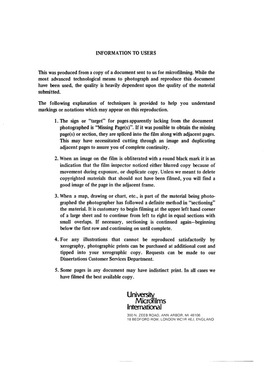| dc.contributor.author | Dellva, Wilfred Leo, | en_US |
| dc.date.accessioned | 2013-08-16T12:28:07Z | |
| dc.date.available | 2013-08-16T12:28:07Z | |
| dc.date.issued | 1980 | en_US |
| dc.identifier.uri | https://hdl.handle.net/11244/4763 | |
| dc.description.abstract | The objective of this study is the development of a capital-budgeting model that explicitly considers the impact of intertemporally correlated cash flows. Traditional capital-budgeting risk analysis often assumes intertemporal independence or utilizes a single-period market model. Failure to consider all aspects of risk analysis may understate the total risk of a project and may lead to incorrect selection and ranking decisions that adversely affect the value of the firm. | en_US |
| dc.description.abstract | Defining risk as the variability of future outcomes, there is considerable controversy as to the most appropriate scalar risk measure. Each scalar risk measure captures some aspect of total risk. The variance of the net present value combines variances and covariances in an additive manner. While the volume of the ellipse and the generalized variance is computed by multiplying variance and covariance elements. The risk measures presented in this study identify different aspects of project variability. If multivariate variability is additive, then the variance of the net present value captures the essence of risk. If, however, multivariate variability is multiplicative, then volume of the ellipsoid or the generalized variance may be a more informative measure of risk. The significant conclusion of this study is that exclusive use of either variance of the net present value or the volume measures to describe multivariate variability may cause the financial decision maker to overlook an important dimension of project risk. | en_US |
| dc.description.abstract | Three scalar multivariate risk measures are presented and evaluated. The variance of the net present value, volume of the isodensity ellipsoid, and generalized variance are shown to be scalar representations of the variance-covariance matrix. Each measure is described algebraically and geometrically. Statistical properties and the capabilities of each scalar to measure total risk are evaluated. | en_US |
| dc.description.abstract | A multivariate approach was selected to accommodate autocorrelation among periodic capital-budgeting cash flows. Assuming multivariate normally distributed cash flows, evaluation of return and risk is equivalent to the evaluation of the mean vector and the variance-covariance matrix. The expected net present value is accepted as an appropriate measure of return. The need to rank and compare alternative capital-budgeting projects leads to the development of scalar multivariate risk measures that capture the information found in the variance-covariance matrix. | en_US |
| dc.format.extent | vii, 199 leaves : | en_US |
| dc.subject | Business Administration, General. | en_US |
| dc.title | Evaluation of risky, intertemporal, imperfectly, correlated cash flows. | en_US |
| dc.type | Thesis | en_US |
| dc.thesis.degree | Ph.D. | en_US |
| dc.thesis.degreeDiscipline | Michael F. Price College of Business | en_US |
| dc.note | Source: Dissertation Abstracts International, Volume: 41-06, Section: A, page: 2679. | en_US |
| ou.identifier | (UMI)AAI8027511 | en_US |
| ou.group | Michael F. Price College of Business | |
